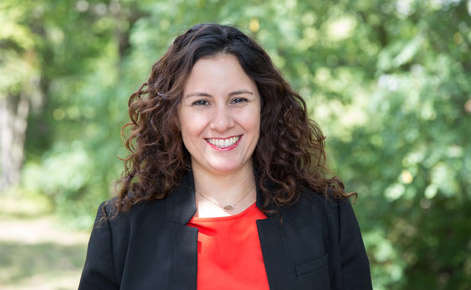Lucía Cárdenas Curiel was recognized as the first place winner for an Outstanding Dissertation by the National Association for Bilingual Education (NABE).
Cárdenas Curiel, new to the Michigan State University College of Education faculty in fall 2017, was celebrated for her May 2017 dissertation: “Texturing with Multimodal Texts Across Content Areas: A Translanguaging Multiliteracies Approach to Teaching and Learning.”
The annual award recognizes research that has made significant contributions to the bilingual education field in commitment to educational equity, excellence and improving instructional practices for linguistically and culturally diverse students.

Cárdenas Curiel wrote the dissertation based, in part, on her own personal experiences when she immigrated from Mexico to the United States as a young adult.
“My experiential knowledge, but most importantly my language, my culture and my identity were devalued when I first arrived to the U.S.,” she said. “I studied the history of bilingualism in the U.S.—and how it holds a deficit-oriented view. I wanted to show how this is historical and continues to permeate in our educational systems today. I have a responsibility for linguistically and culturally diverse students in the future: How can I help positively impact their schooling experiences by valuing their linguistic and cultural resources?”
Her research examined ways in which a bilingual teacher and emergent bilinguals—that is, all children in dual-language classrooms learning new practices to become bilingual and biliterate—interact and engage with multimodal texts across the curriculum. Multimodal texts can be a variety of sources, including actual text, abstract and concrete objects, images, music, symbols and more.
In a semester-long study of a third-grade dual-language classroom, she discovered that when the teacher utilized differing methods of instruction, it increased student engagement. Not only that, but the design, production and distribution of continually expanding types of text can help promote language, development and disciplinary knowledge.
In her dissertation, she wrote: “To ensure success for the growing number of Spanish (and other languages) speaking immigrants coming to the U.S., educators need to make use of the linguistic and cultural capital, as well as the experiential knowledge, that emergent bilinguals bring into the classroom, offering them opportunities to succeed academically and professionally …”
Cárdenas Curiel hopes that this research will help to provide further opportunities for culturally diverse students to succeed—and she continues to study the topic.
Whereas her dissertation focused on a dual-language classroom, she hopes to transition to a mainstream classroom and even more subject areas, including mathematics and art. The recognition from NABE, which Cárdenas Curiel received in March 2018, will help with that; it comes with scholarship funds to travel to Granada, Spain in summer 2018 to study language and culture.
“Right now, I see a log of negative messaging and obstacles when it comes to emergent bilinguals,” Cárdenas Curiel said. “I want to disrupt those that are in media and politics. Through this, I want to make the experience better for immigrants and minorities in U.S. schools.”




